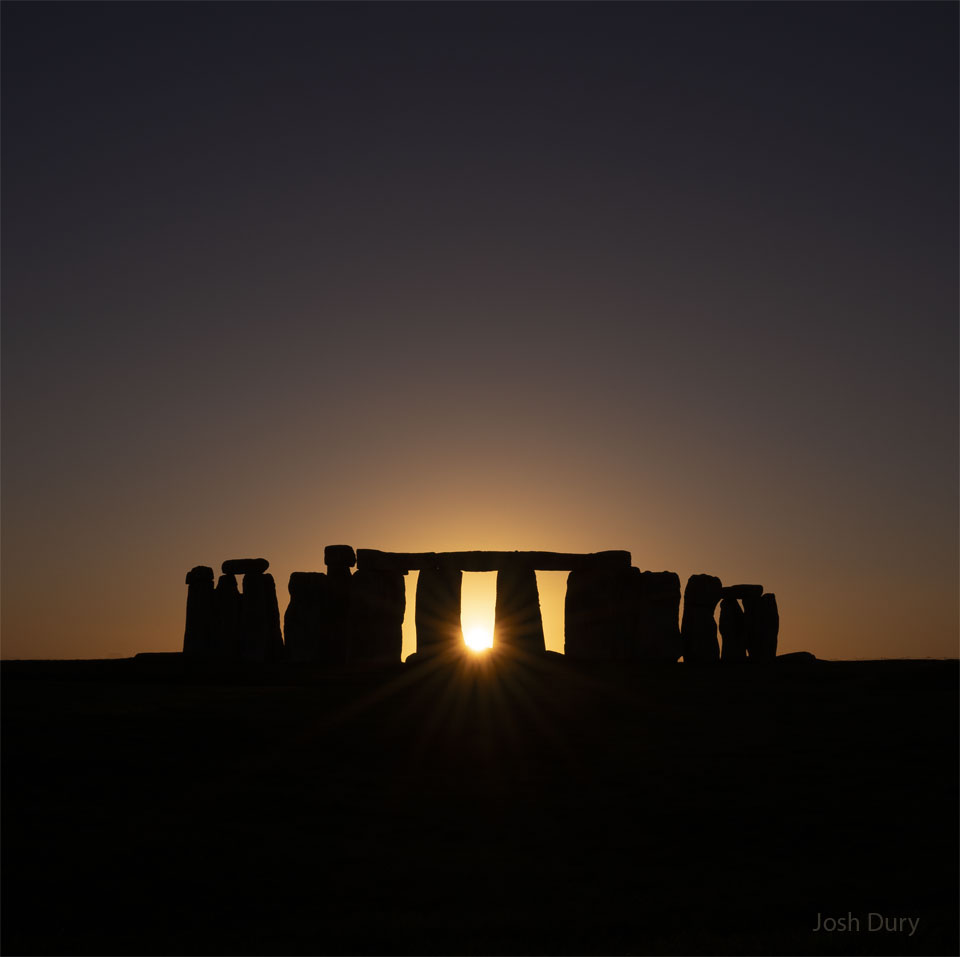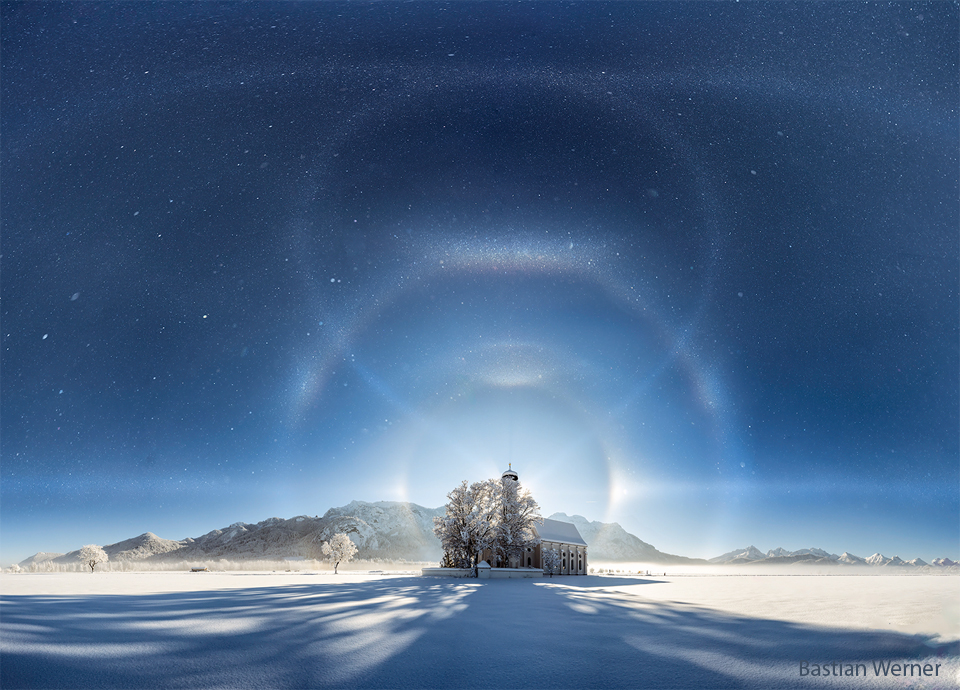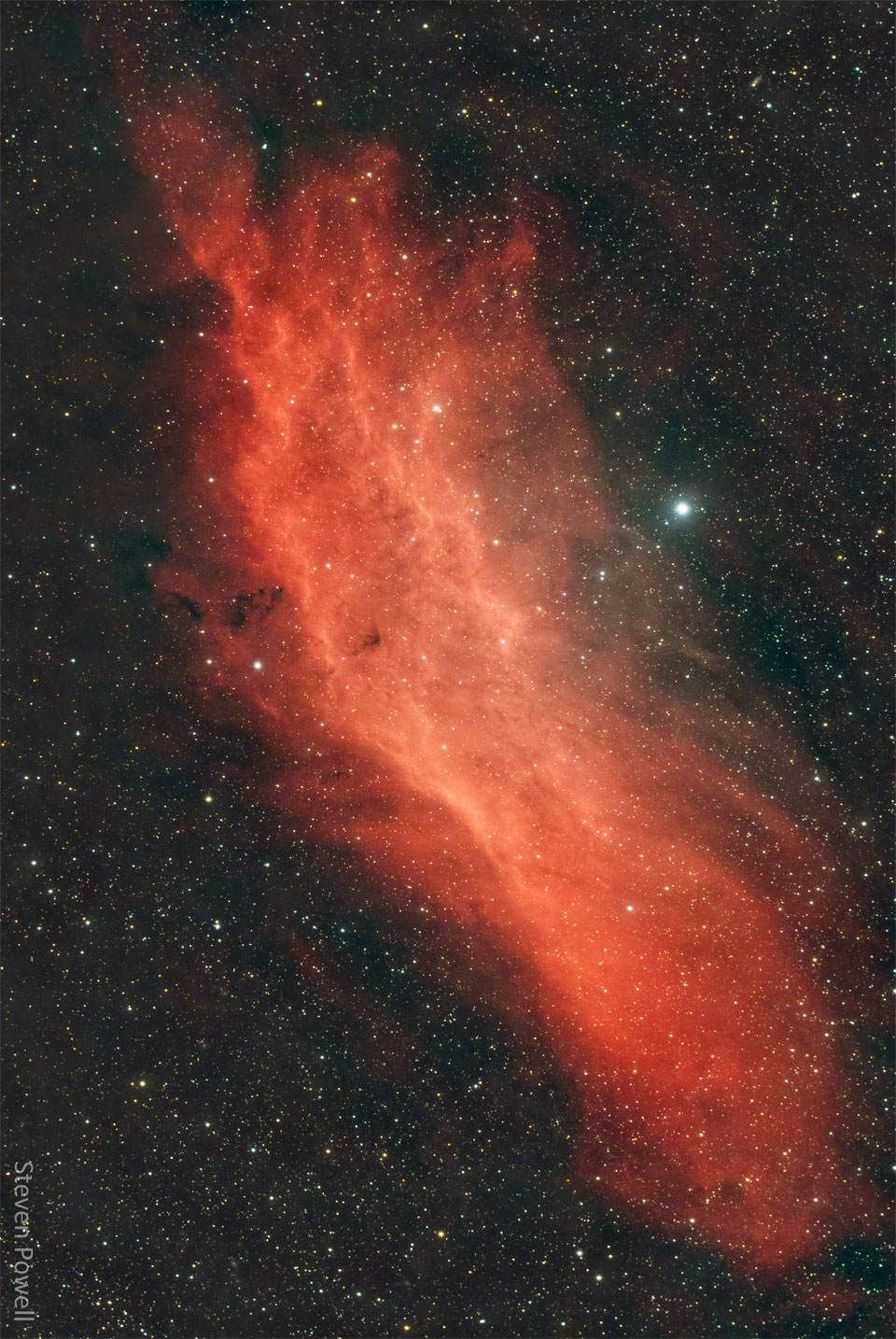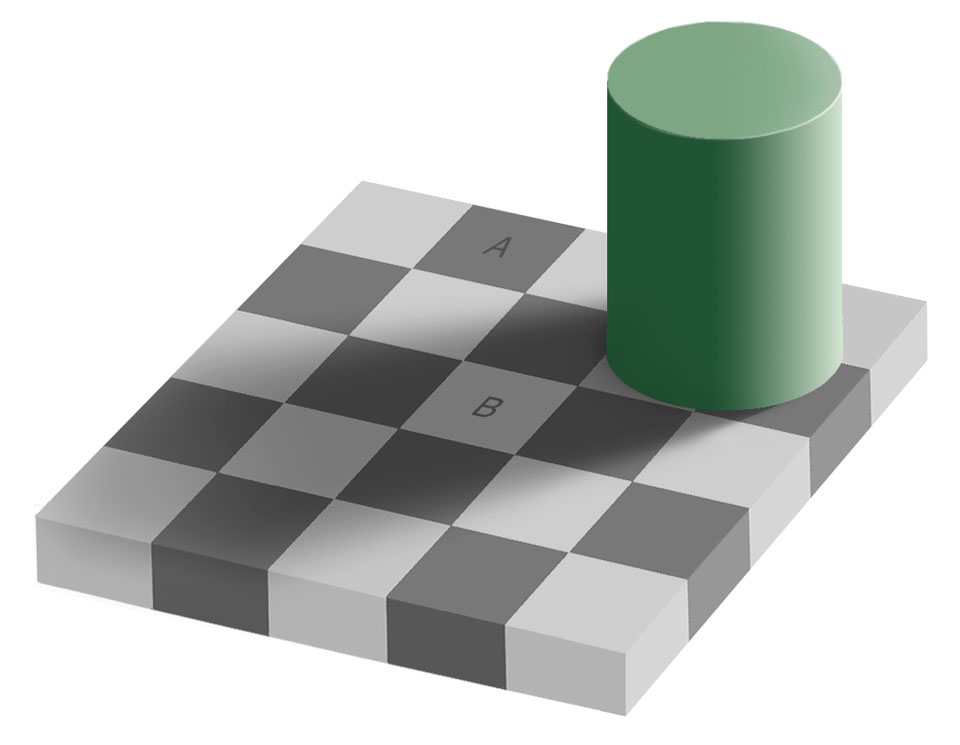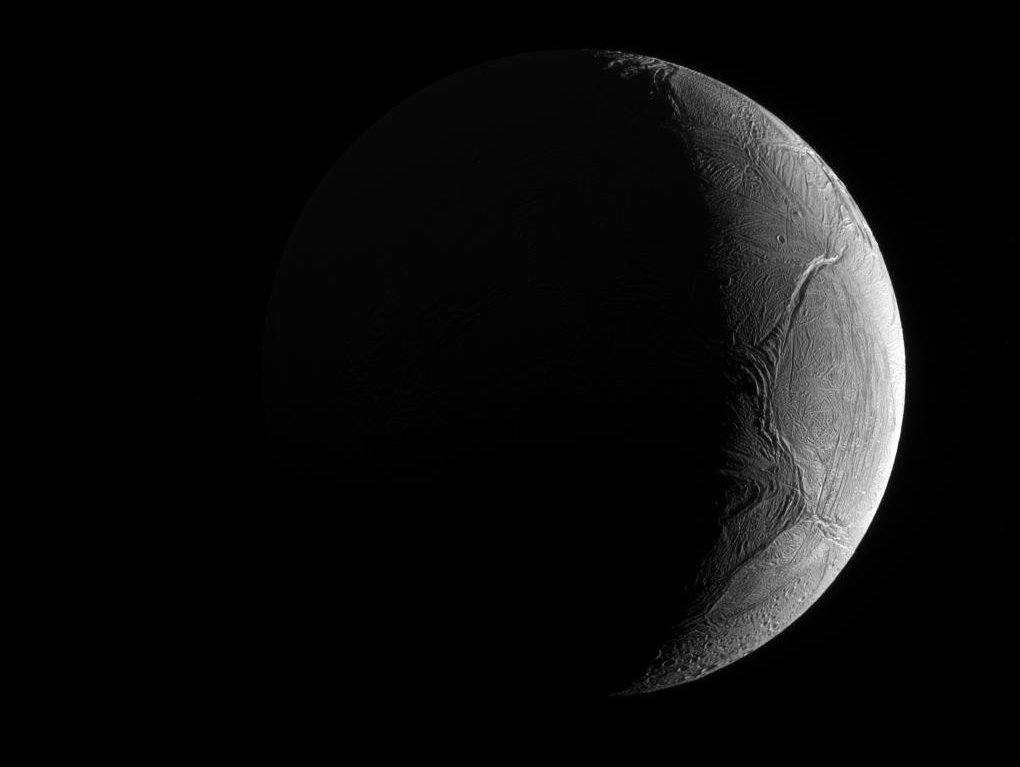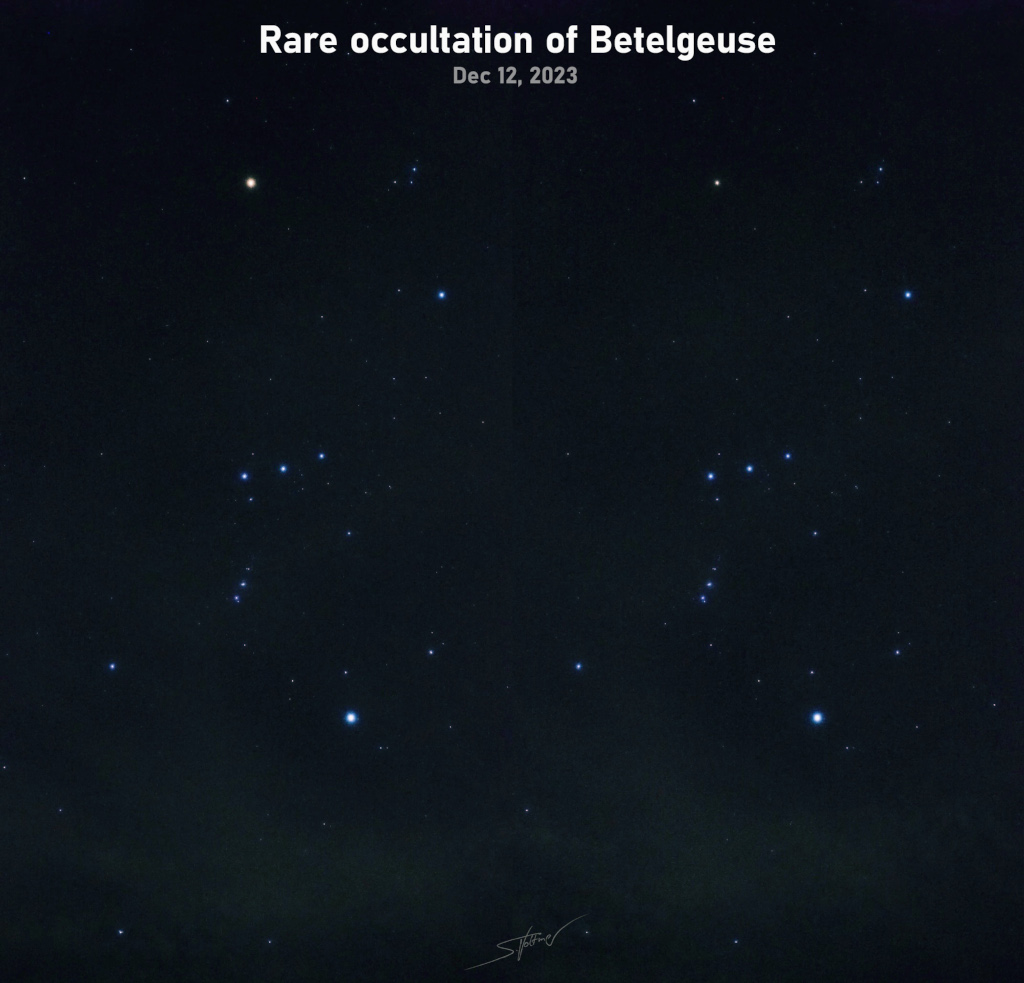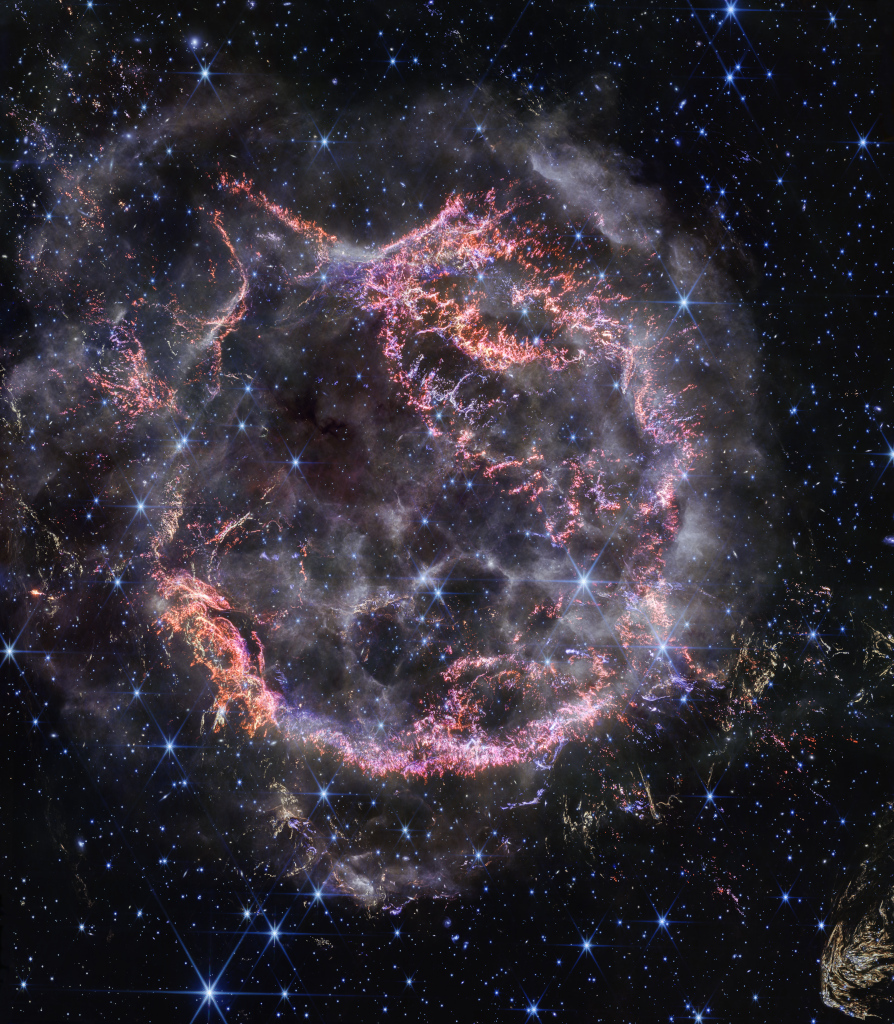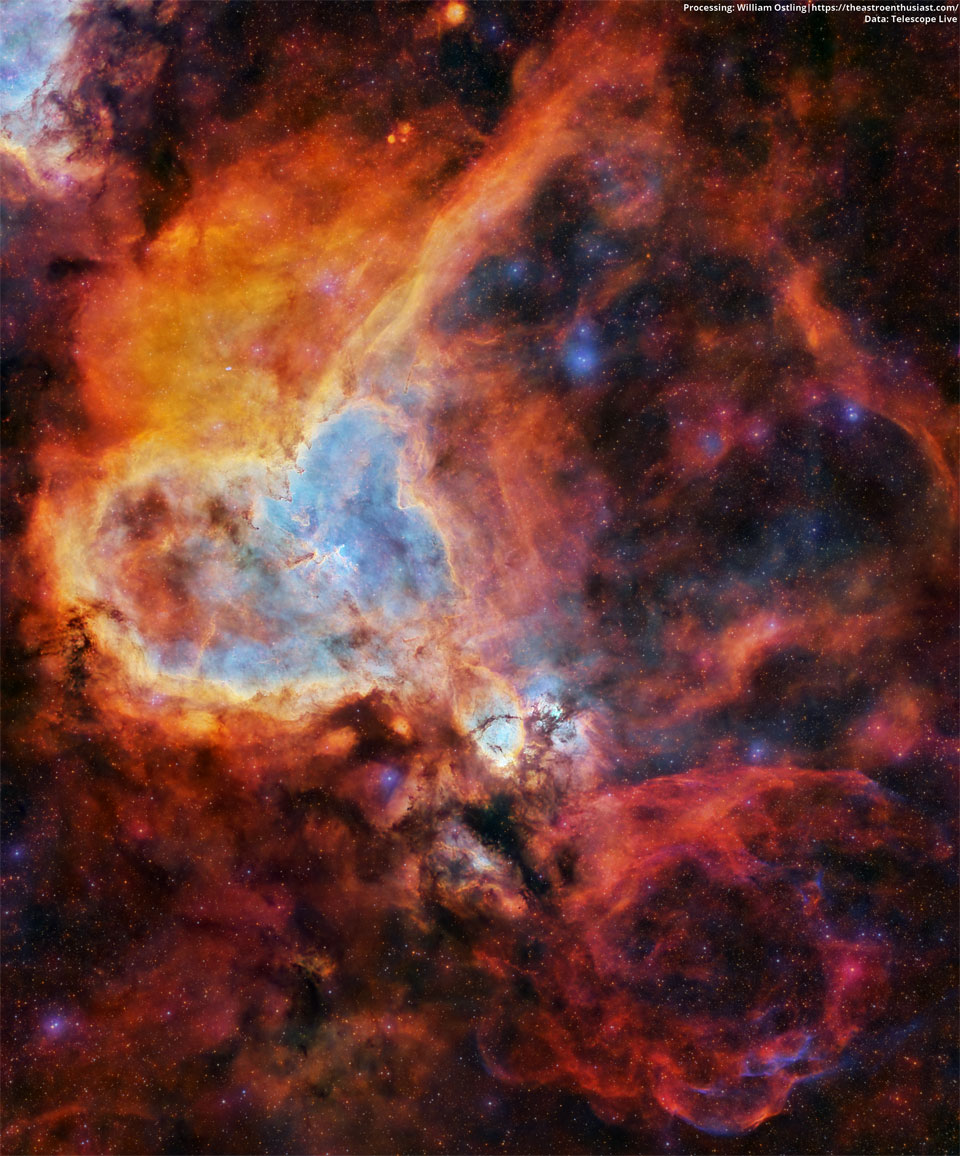Η Αστρονομική Εικόνα της Ημέρας από τη NASA
Sunset Solstice over Stonehenge
22/12/2025
Yesterday the Sun reached its southernmost point in planet Earth's sky. Called a solstice, many cultures mark yesterday's date as a change of seasons -- from autumn to winter in Earth's Northern Hemisphere and from spring to summer in Earth's Southern Hemisphere. The featured image was taken just before the longest night of the 2025 northern year at Stonehenge in United Kingdom. There, through stones precisely placed 4,500 years ago, a 4.5 billion year old large glowing orb is seen setting. Even given the precession of the Earth's rotational axis over the millennia, the Sun continues to set over Stonehenge in an astronomically significant way.
Copyright: English Heritage, Josh Dury
Προηγούμενες Αστρονομικές Εικόνες της Ημέρας από τη NASA
Ice Halos over Bavaria
20/12/2023
What's causing those unusual sky arcs? Ice crystals. While crossing a field of fresh snow near Füssen, Bavaria, Germany, earlier this month, the photographer noticed that he had entered an ice fog. For suspended water to freeze into an ice fog requires quite cold temperatures, and indeed the air temperature on this day was measured at well below zero. The ice fog reflected light from the Sun setting behind St. Coleman Church. The result was one of the greatest spectacles the photographer has ever seen. First, the spots in the featured picture are not background stars but suspended ice and snow. Next, two prominent ice halos are visible: the 22-degree halo and the 46-degree halo. Multiple arcs are also visible, including, from top to bottom, antisolar (subsun), circumzenithal, Parry, tangent, and parhelic (horizontal). Finally, the balloon shaped curve connecting the top arc to the Sun is the rarest of all: it is the heliac arc, created by reflection from the sides of hexagonally shaped ice crystals suspended in a horizontal orientation.
Copyright: Bastian Werner
NGC 1499: The California Nebula
19/12/2023
Could Queen Calafia's mythical island exist in space? Perhaps not, but by chance the outline of this molecular space cloud echoes the outline of the state of California, USA. Our Sun has its home within the Milky Way's Orion Arm, only about 1,000 light-years from the California Nebula. Also known as NGC 1499, the classic emission nebula is around 100 light-years long. On the featured image, the most prominent glow of the California Nebula is the red light characteristic of hydrogen atoms recombining with long lost electrons, stripped away (ionized) by energetic starlight. The star most likely providing the energetic starlight that ionizes much of the nebular gas is the bright, hot, bluish Xi Persei just to the right of the nebula. A regular target for astrophotographers, the California Nebula can be spotted with a wide-field telescope under a dark sky toward the constellation of Perseus, not far from the Pleiades. Explore Your Universe: Random APOD Generator
Copyright: Steven Powell
The Same Color Illusion
18/12/2023
Are squares A and B the same color? They are! To verify this, either run your cursor over the image or click here to see them connected. The featured illusion, an example of the same color illusion, illustrates that purely human perceptions in science may be ambiguous or inaccurate, even such a seemingly direct perception as relative color. Similar illusions exist on the sky, such as the size of the Moon near the horizon, or the apparent shapes of astronomical objects. The advent of automated, reproducible measuring devices such as CCDs have made science in general and astronomy in particular less prone to, but not free of, human-biased illusions. APOD Year in Review (2023): RJN's Night Sky Network Lecture
Copyright: NASA
Geminids over China's Nianhu Lake
17/12/2023
Where are all of these meteors coming from? In terms of direction on the sky, the pointed answer is the constellation of Gemini. That is why the major meteor shower in December is known as the Geminids -- because shower meteors all appear to come from a radiant toward Gemini. Three dimensionally, however, sand-sized debris expelled from the unusual asteroid 3200 Phaethon follows a well-defined orbit about our Sun, and the part of the orbit that approaches Earth is superposed in front of the constellation of Gemini. Therefore, when Earth crosses this orbit, the radiant point of falling debris appears in Gemini. Featured here is a composite of many images taken a few days ago through dark skies from Nianhu Lake in China. Over 100 bright meteor streaks from the Geminids meteor shower are visible. APOD Year in Review (2023): RJN's Night Sky Network Lecture
Copyright: Hongyang Luo
Crescent Enceladus
16/12/2023
Peering from the shadows, the Saturn-facing hemisphere of tantalizing inner moon Enceladus poses in this Cassini spacecraft image. North is up in the dramatic scene captured during November 2016 as Cassini's camera was pointed in a nearly sunward direction about 130,000 kilometers from the moon's bright crescent. In fact, the distant world reflects over 90 percent of the sunlight it receives, giving its surface about the same reflectivity as fresh snow. A mere 500 kilometers in diameter, Enceladus is a surprisingly active moon. Data and images collected during Cassini's flybys have revealed water vapor and ice grains spewing from south polar geysers and evidence of an ocean of liquid water hidden beneath the moon's icy crust.
Copyright: NASA
Betelgeuse Eclipsed
15/12/2023
Asteroid 319 Leona cast a shadow across planet Earth on December 12, as it passed in front of bright star Betelgeuse. But to see everyone's favorite red giant star fade this time, you had to stand near the center line of the narrow shadow path starting in central Mexico and extending eastward across southern Florida, the Atlantic Ocean, southern Europe, and Eurasia. The geocentric celestial event was captured in these two panels taken at Almodovar del Rio, Spain from before (left) and during the asteroid-star occultation. In both panels Betelgeuse is seen above and left, at the shoulder of the familiar constellation Orion. Its brightness diminishes noticeably during the exceedingly rare occultation when, for several seconds, the giant star was briefly eclipsed by a roughly 60 kilometer diameter main-belt asteroid.
Copyright: Sebastian Voltmer
Supernova Remnant Cassiopeia A
14/12/2023
Massive stars in our Milky Way Galaxy live spectacular lives. Collapsing from vast cosmic clouds, their nuclear furnaces ignite and create heavy elements in their cores. After only a few million years for the most massive stars, the enriched material is blasted back into interstellar space where star formation can begin anew. The expanding debris cloud known as Cassiopeia A is an example of this final phase of the stellar life cycle. Light from the supernova explosion that created this remnant would have been first seen in planet Earth's sky about 350 years ago, although it took that light 11,000 years to reach us. This sharp NIRCam image from the James Webb Space Telescope shows the still hot filaments and knots in the supernova remnant. The whitish, smoke-like outer shell of the expanding blast wave is about 20 light-years across. Light echoes from the massive star's cataclysmic explosion are also identified in Webb's detailed image of supernova remnant Cassiopeia A. Tonight watch: The Geminids
Copyright: NASA
Deep Field: The Heart Nebula
13/12/2023
What excites the Heart Nebula? First, the large emission nebula on the left, catalogued as IC 1805, looks somewhat like a human heart. The nebula glows brightly in red light emitted by its most prominent element, hydrogen, but this long-exposure image was also blended with light emitted by silicon (yellow) and oxygen (blue). In the center of the Heart Nebula are young stars from the open star cluster Melotte 15 that are eroding away several picturesque dust pillars with their atom-exciting energetic light and winds. The Heart Nebula is located about 7,500 light years away toward the constellation of Cassiopeia. At the bottom right of the Heart Nebula is the companion Fishhead Nebula. This wide and deep image clearly shows, though, that glowing gas surrounds the Heart Nebula in all directions. Tonight watch: The Geminids
Copyright: William Ostling, Telescope Live
Η Αστρονομική Εικόνα της Ημέρας από τη NASA (NASA Astronomy Picture of the Day) είναι μια δωρεάν υπηρεσία που παρέχει καθημερινά μια εντυπωσιακή εικόνα από το σύμπαν, την λήψη της οποίας έχει πραγματοποιήσει κάποιος από τους αστρονόμους της NASA ή από κάποιον από τους δορυφόρους ή τα τηλεσκόπια που η NASA λειτουργεί. Οι εικόνες που εμφανίζονται καλύπτουν μια ευρεία γκάμα από θέματα, συμπεριλαμβανομένων των αστερισμών, των γαλαξιών, των πλανητικών συστημάτων, των κομητών, των αστρικών σωμάτων και των παρατηρητηρίων. Κάθε εικόνα συνοδεύεται από μια σύντομη εξήγηση και πληροφορίες σχετικά με το τι παρατηρείται στην εικόνα.
